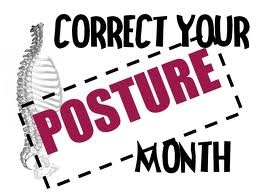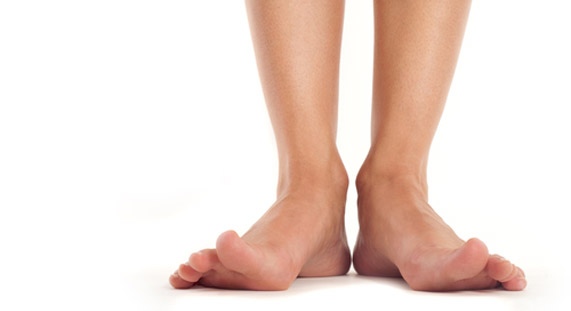Chiropractic

Ball Reverse Crunch
Lie on your back, calves and hamstrings pressed against the exercise ball and arms spread out.
Squeeze the ball with your legs and roll your knees towards your chest then roll back down after a short pause.
To avoid straining your neck, look straight up instead of looking at your knees.

Slumping your shoulders doesn’t just make you resemble one of our long-extinct ancestors—if you don’t stand up straight, no amount of exercise will give you the hot bod you’re after.
Here’s why: Over time, poor posture takes a serious toll on your spine, shoulders, hips, and knees. In fact, it can cause a cascade of structural flaws that lead to back and joint pain, reduced flexibility, and compromised muscles, all of which limit your ability to burn fat and build strength.
But you can head off all these problems by using the exercises to fix your form, soothe your pain, and get your curves moving in the right direction.
Get your posture checked and we will offer custom exercises to correct your problems. Call 604-270-1007 now. All ages, young and old, accepted.

Ball Jacknife
Place your ankles on top of the exercise ball, legs extended, chest facing the floor and extend your arms to lift you from the floor.
Keeping your weight on your extended arms, roll the ball in by bending your knees and hips and extend your legs back after a short pause.
Breathe out while rolling the ball in and breathe in while returning to starting position.

Metatarsalgia
Burning pain in the forefoot is a common symptom of metatarsalgia. Many patients will describe the feeling of having a pebble or a marble stuck in their shoe.
Causes can be from an increase in activity, ill-fitted footwear such as high heels, or from the emergence of another foot ailment, such as a bunion.
Treatment options for metatarsalgia
• Footmaxx™ orthotics should be worn to correct abnormal pronation and redistribute the weight more evenly along the plantar surface.
Alternate footwear frequently
• Tight-fitting footwear can cause abnormal gait and should be worn in moderation. It is important to alternate shoes for work, social life, and exercise.
Take a break
• It is important to rehabilitate the injured area. Rest often and apply ice to reduce soreness and swelling.
• Try new exercise routines that apply less pressure on the feet, such as swimming or bike riding.
 Â Â Â Â Â Begin exercising now if you haven’t been active all winter.
     Begin exercising now if you haven’t been active all winter.
     You may be tempted to spend the whole weekend in the garden when it’s mild and sunny. But if you haven’t prepared yourself physically, you could end up with aching muscles, a sore back and painful joints.
     Gardening may not be an intense sport but it’s lots of hard work. One can burn up to 300 calories per hour. With all the lifting and squatting involved, it can also be an effective method for muscle conditioning.
Most people garden for fun and for stress relief, but gardening can also have lots of health benefits. If done regularly, it can provide enough activity to reduce the risk for heart disease, cancer, diabetes and high blood pressure.
Be Proactive
- Try to exercise all year long!
- Begin with aerobic activities such as walking, stairclimbing or fitness classes 3 times a week and strength training twice a week
- Exercises like lunges, squats, rows, lat-pulldowns, push-ups, tricep and bicep curls, crunches and spinal stabilization exercises. Two sets of 8 repetitions of each exercise will help aviod extreme stiffness.
Go Slowly
- Don’t do too much, too soon!
- Plan your gardening 20-30 minutes at a time in the beginning about 3 times a week, then slowly increase the duration. In time, you will be able to safely spend the day in the garden
Warm Up First
- Go for a 6-12 minute walk and stretch out muscles you will be using that day. Arms, legs, back, and even fingers.
Move Around
- Don’t stay in one position too long!
- Avoid kneeling or bending forward for extend period of time. Get up and walk around. Take a few more breaks
Tuck in that Gut
- Always keep your core, abdominal muscles, contracted while gardening. This will help you support your back and decrease the risk of injury. This may require some practice but strengthening your core is essential for any health spine.
Use your Legs
- Bend your knees and use your leg muscles when lifting, bending, pushing or pulling. Always use good lifting technique and avoid twisting when diggin, lifting or carrying.
Water Yourself
- Keep yourself hydrated especially in the sun. Just like exercising in the gym, have a sip of water every 15 minutes. If you are thirsty, drink more. Depleted water levels will tighten your muscles as well.Â
Cool Down
- After a long day of gardening, you’ll have used many muscles throughout your body. It is now important to stretch out those muscles groups to decrease the chances of muscle cramps.
Enjoy your garden and remember to stop and smell your roses!!









